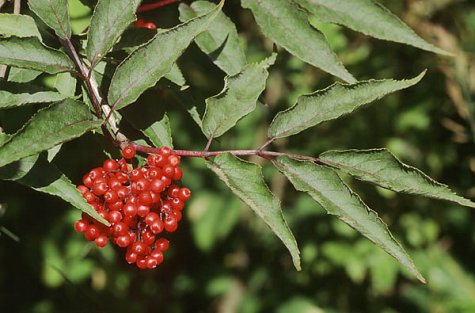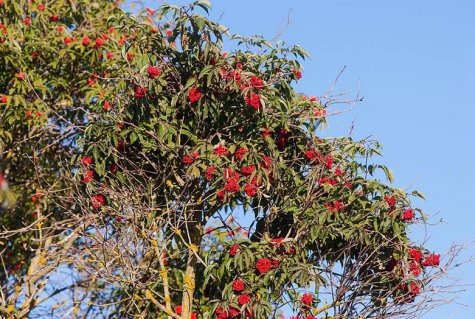Red elder berry clusters
Photos Arne Ader
Translation Liis
Red-berried elder
Red-berried elder Punane leeder Sambucus racemosa
The red elder berries make you notice the shrub. We see the red elder in many different places: near housess, in farmhouse sites, on waste land, at forest verges where it prefers sunshine; it does not thrive in shady habitats. It is a fast growing and undemanding, well branched shrub, sometimes even a small tree that may reach up to 7 metres. Elder leaves usually have three pairs of leaflets, rarely 2; matt green on the top side and blue-green on the underside, with a sharp tip and serrated margin.
Probably because of the peculiar smell the little berries of the red-berried elder are generally considered to be toxic, but only the seeds are poisonous. Many people have dried the ripe berries, prepared jellies or even liqueurs. It is not recommended to use them as food in Estonia. Who is curious may taste a ripe berry but as said, spit out the seeds.
The elderberry shrubs owe their wide distribution to the birds; they like eating the berries (botanically drupes), the berries are very numerous in a cluster and each little fruit contains 3-5 seeds. Birds also like to nest in the densely branched elderberry bushes.
Red-berried elder










